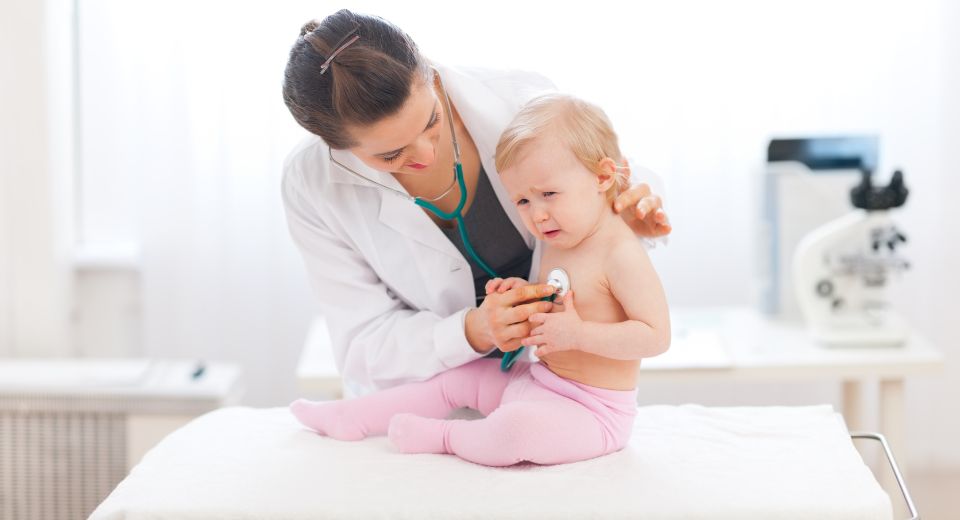Respiratory Syncytial Virus (RSV) is a respiratory virus with a large range of symptoms. It can affect all ages but usually acts like a common cold for healthy, older children and adults. However, for premature infants and immunocompromised babies and children, as well as older adults, RSV can make them very sick and sometimes require hospitalization.
Nearly all U.S. children will contract an RSV infection by the time they are 2 years old. (RSV) is common, and one of the many viruses that cause respiratory illness ― illnesses of the nose, throat, and lungs. For healthy children, RSV symptoms resemble a common cold, but it may lead some immunosuppressed and young babies to develop lower respiratory illnesses like bronchiolitis and pneumonia.
RSV is spread from respiratory secretions through close contact with infected people or contact with contaminated surfaces or objects. The typical peak season of transmission is from October to March.
What are the symptoms of RSV in a child?
The early phase of RSV in infants and young children is often mild, like a cold. In children younger than 3 years, the disease may progress into the lower airways and cause coughing and wheezing. In some, the infection progresses to a severe respiratory disease requiring hospitalization to help the child breathe.
RSV is so common that most children will be infected by the time they are 2 years old. This will give them protection against that specific strain of the virus, but they are able to be reinfected by a different strain anytime throughout life.
The following are the most common symptoms of RSV, which may appear two to five days after exposure to the virus. However, each baby may experience symptoms differently. Symptoms may include:
- Runny nose
- Fever
- Cough
- Apnea (periods without breathing)
- Trouble eating, drinking or swallowing
- Wheezing
- Flaring of the nostrils or straining of the chest or stomach while breathing
- Breathing faster than usual, or trouble breathing
The symptoms of RSV may resemble other conditions or medical problems. Always consult your child’s pediatrician for a diagnosis.
When to seek medical help or go to the ER?
RSV symptoms are usually at their worst on days two to five of the illness, but most children will recover from an RSV infection on their own. If your child is exhibiting more severe symptoms from RSV, you may need to call your pediatrician for treatment.
Call your pediatrician or urgent care right away if your child has the following symptoms:
- A fever of 100.4°F or higher and is 1 to 3 months of age.
- A fever that rises above 104°F repeatedly.
- Coughing, wheezing, rapid breathing or other symptoms that get worse over time.
- Signs of dehydration, such as fewer wet diapers than usual.
- Cheeks, lips, tongue and inside of mouth appear normal, but hands, arms, legs or feet appear blue.
Visit your nearest emergency department if your child:
- Is under 28 days old with a fever of 100.4°F or more.
- Is having severe trouble breathing.
- Is showing significant changes in their mental state like decreased activity and alertness.
- Cheeks, lips, tongue, and the inside of mouth appear blue, indicating that your child may have low oxygen.
How is it diagnosed?
Healthcare providers usually diagnose a respiratory virus by taking a medical history and doing an exam. In many kids, they don’t need to distinguish RSV from a common cold. But for children who are assessed by a healthcare provider to have severe respiratory symptoms, their provider will likely want to evaluate them for specific respiratory viruses to determine the best treatment.
Your child’s provider may decide to run a test called respiratory viral panel (RVP) or Flu-Vid. RVP can detect a variety of respiratory illnesses like RSV, enterovirus, rhinovirus, influenza A and B and others. Flu-vid can test for influenza A, influenza B, RSV and Covid-19.
Both tests may be performed at a pediatrician’s office or urgent care, where the provider will collect a sample of your child’s nasal fluids with a cotton swab or by suction through a bulb syringe. Then, they should have the results within a few hours.
What is the treatment in children?
Specific treatment for RSV will be determined by your baby’s pediatrician based on:
- Your child’s age, overall health, and medical history.
- The extent of the condition.
- Your child’s tolerance for specific medications, procedures, or therapies.
There are no medications used to treat the virus itself. Care of a baby with RSV involves treating the effects of the virus on the respiratory system. Because a virus causes the illness, antibiotics are not useful, unless there is also a bacterial infection. If your child is having severe illness and trouble breathing, treatment may also include:
- Supplemental oxygen.
- Breathing treatments.
- Suctioning of mucus.
- Intravenous fluids (to prevent dehydration).
- Tube feedings (if the baby has difficulty sucking).
- Children with very serious breathing problems are intubated and put on ventilators, or breathing tubes are inserted and attached to machines that assist with breathing.
- Children with cheeks, lips, tongue and inside of the mouth that appear normal, but hands, arms, legs, or feet appear blue will need to be warmed up and hydrated.
How can it be prevented?
Because RSV is spread through contact with infected people or contaminated surfaces, families should avoid sharing cups, eating utensils and close contact like kissing, or hugging with anyone with cold-like symptoms. Practice frequent hand washing and disinfect frequently touched surfaces, doorknobs, countertops, and phones.
Also, make sure people wash their hands or use an alcohol-based hand cleaner before and after touching your baby. Ask your child’s healthcare provider if your child is at high risk for RSV. If so, ask about monthly injections, called palivizumab, during RSV season to help prevent infection.
Author: CHOC Pediatricians
Source: CHOC Children’s


